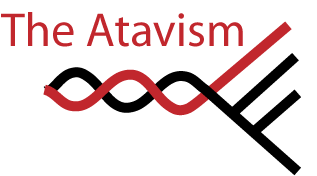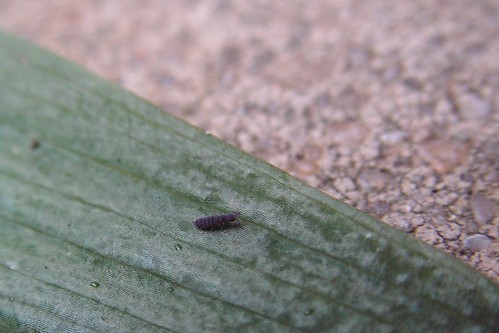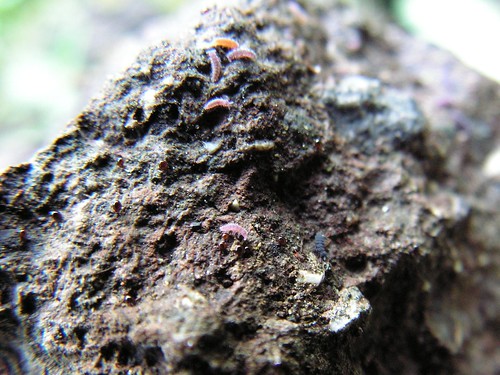Sunday, December 6, 2009
Sunday Spinelessness - collembola 2.0
The subject of this week's Sunday Spinelessness is one of the most important organisms in the world:
Ok, so the photo doesn't do the little guy justice, but in my defence he is about 3mm long. It's a springtail (Collembola) - a member of a group of arthropods closely related to (but distinct from insects). They get their common name from a long forked organ, the furcula, that usually sits folded up under the abdomen. When you disturb a springtail the furcula "fires", pressing down on the ground sending the animal off "like a madly bouncing full stop" in the words of Sheila Natusch.
There are tonnes of reasons to place springtails among the most important animals in the world. The earliest fossil hexapod, and one of the first terrestrial animals, Rhyniella praecursor, is (almost certainly) a springtail and Gomphiocephalus hodgsoni (affectionately referred to as 'Gomph' by Nick Demetras at last weekend's Molecular Ecology meeting) is the largest permanent resident of the Antarctic mainland but themost important thing to know about springtails is the role that play in making soil.
That's probably typical of soil anywhere on earth - a couple of species of springtail along with two mites (you might need to click on the photo to see a high resolution version to see the second mite species). In fact, it's been estimated that there are as many as 100 000 springtails in each square metre of soil in every terrestrial habitat on earth! They eat decomposing meterial in soil, acting to free up the nutrients in plants and fungi as they grow and returning them either to the soil or to small soil predators (centipedes, spiders...). Experiments have shown that springtails play a key role in such "nutrient cycling" in many ecosystems.
As I've said the photos I've shown you here really don't do springtails justice. Thankfully, in putting this post together I've discovered a cache of much better photos. I uploaded my photos for this post to flickr a few weeks ago and received a comment not long after from Belgian collembologist Frans Jessens asking me to geotag the photos to include in his impressive project to map the world's collembola. There are some stunning photos on that map so be sure to check them out.
And finally, if your sunday is just not spineless enough then check out the Circus of the Spineless - a month's worth of bugs and critters from across the blogosphere
Labels: collembola, environment and ecology, mites, photos, sci-blogs, sunday spinelessness




